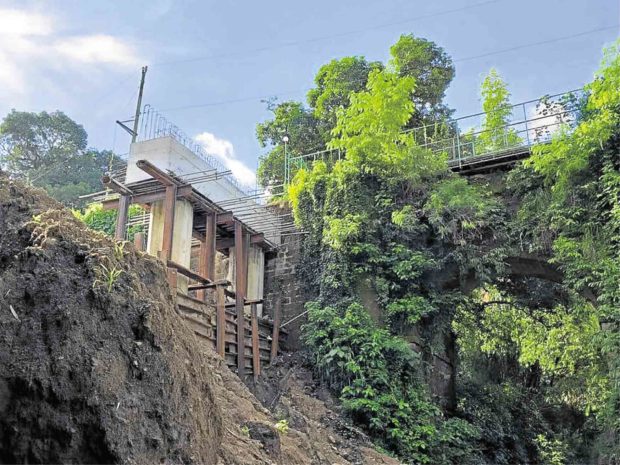
The Department of Public Works and Highways (DPWH) is drawing criticisms anew for a bridge construction project beside the Spanish-era Camaren Bridge in Buenavista II in General Trias, Cavite.
Built in the 19th century and at more than 100 years old, Camaren is a presumed important cultural property (ICP) under the National Heritage Act of 2009.
However, Josine Estuye of the DPWH public information division denied that the walkway would be affected. Speaking for the DPWH district engineering office in Cavite, Estuye said “the historic Buenavista walkway in General Trias will be spared and will no longer be affected with planned adjustments on the design of the ongoing bridge project.”
But the DPWH office in Cavite planning chief Romualdo Bernardo told the Inquirer the project would still affect the old bridge because portions of it might be chipped to give way to the new one.
He added that the new bridge was designed to be constructed right beside the old one. He said that he believed the old bridge should be demolished for safety reasons.
Bernardo did not explain why the old bridge should be demolished despite the new bridge.
Heritage advocates said the DPWH Cavite office did not seem aware of the memorandum circular 2 issued last April by Public Works Secretary Mark Villar directing building officials and municipal engineers on the “strict preservation and conservation of national cultural heritage structures.”
In a statement sent to the Inquirer, the local government of General Trias led by Mayor Antonio Ferrer said it would support “all efforts to preserve our country’s historical and cultural treasures,” but would not compromise where the safety of its residents is concerned.
The old bridge is used by pedestrians and motorcycle riders and tricyle commuters.
The bridge, the statement said, was significantly damaged by tropical storm “Maring” (international name Trami) in 2013.
“(Rep.) Luis Ferrer already relayed to DPWH Cavite a request to save as much as they can of the Camaren Bridge, without compromising the viability of the project and the structural integrity of the new bridge,” the statement said.
The local government added it had coordinated with the DPWH to “clarify the implementing agency’s plans and determine the possibility of minimizing the impact the ongoing project will have on the old structure.”
Consultation
But heritage advocates said the local government unit did not consult the National Historical Commission of the Philippines or cultural agencies.
A stone’s throw away from Camaren is another bridge from the Spanish era.
Called Kastilaan Bridge, the structure is distinguished by its high arching structure. It is also a presumed important cultural property.
The General Trias city government said it considered the old bridges as “cultural assets.”
“We are still waiting for the completion of the built heritage inventory being conducted by the National Commission for Culture and the Arts (NCCA) in partnership with the city government of General Trias in order for us to properly formulate plans and measures to preserve, as well as to promote our city’s rich culture and heritage,” the statement said.
General Trias resident and heritage advocate Billy Malacura said Cavite is a historic province and its heritage assets must be protected.
He said local and DPWH officials should learn from the example of Tayabas, Quezon, which protects and preserves its heritage bridges.
“It takes political will and fervent public service to understand that it is more than fascination over an old bridge,” Malacura said.
“If they are really good and professional engineers, it will not be an issue since it is easy to divert the new bridge away from the old,” he added. —CONTRIBUTED